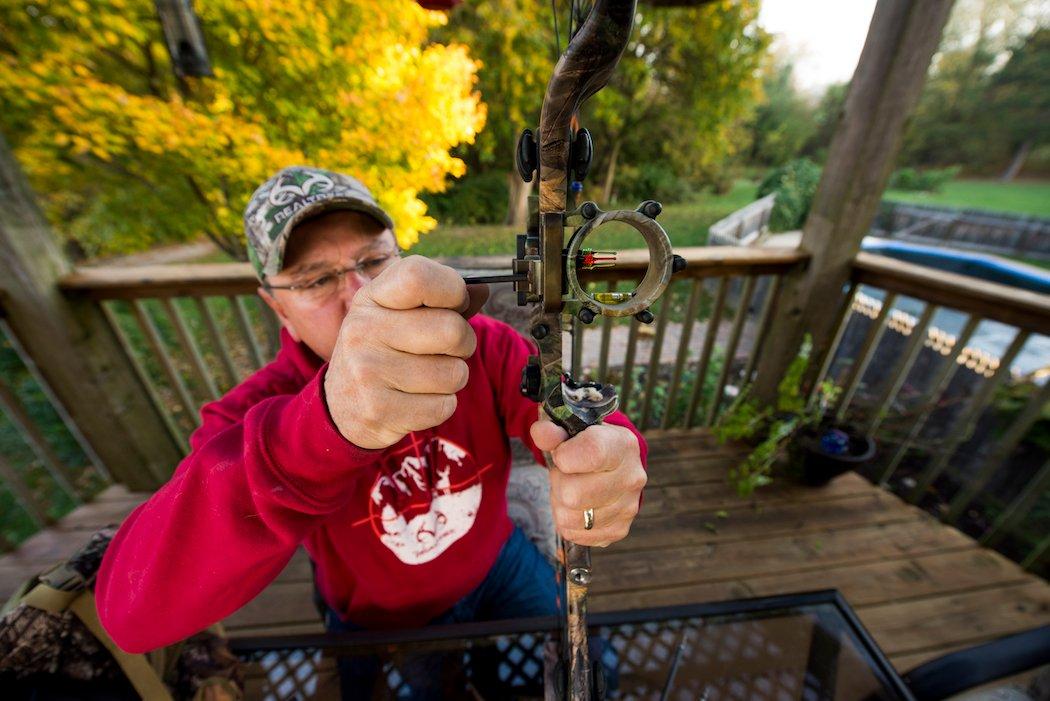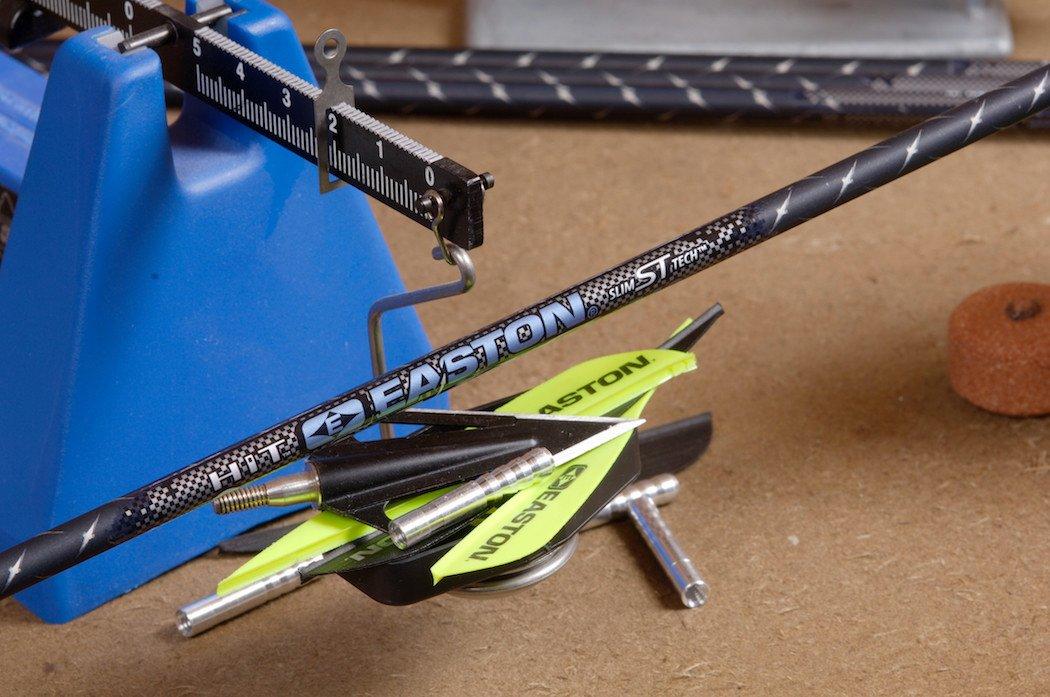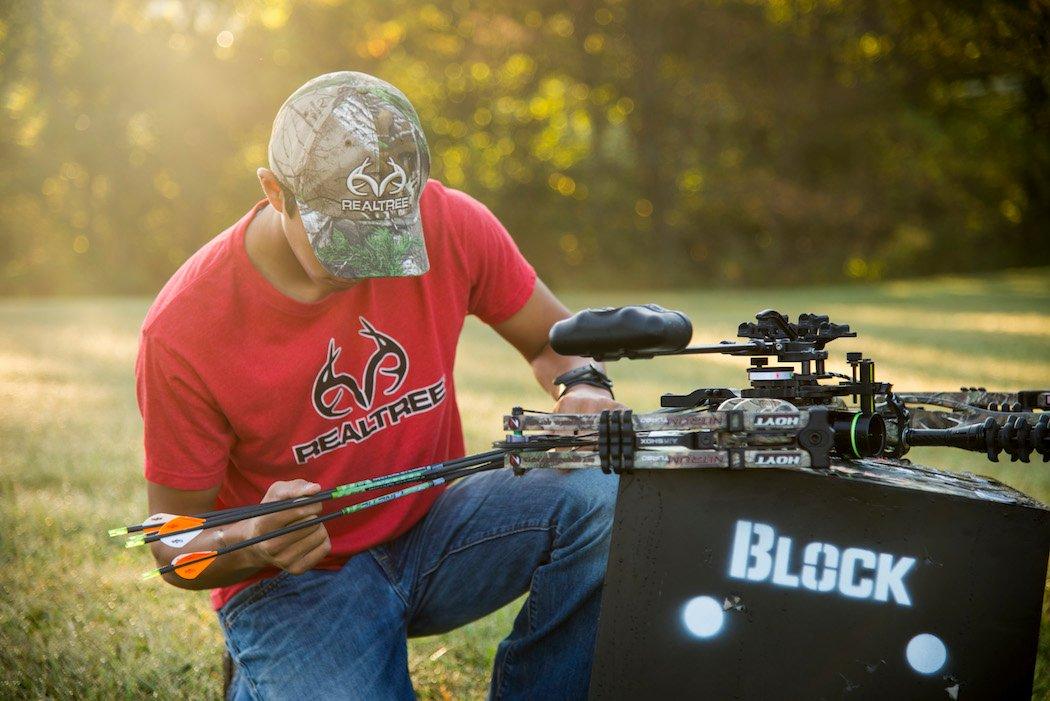Increasing your maximum ethical range improves the odds
Adding a few yards to your ethical maximum range will really increase your odds this season. It may seem like a matter that is only important to hunters who roam over big western landscapes, but I'll show you that it's actually more important to treestand hunters. How? For the foot hunter, increasing maximum range from 25 yards to 35 yards translates into a 40 percent increase in potential shot opportunities.
Now for the stand hunter. Because the tree stand hunter is stationary and the deer can often pass on all sides, the formula changes. Rather than increasing your coverage in just one direction, you actually increase your coverage in all directions. We start dealing with surface area rather than distance. In fact, by increasing your effective distance from 25 to 35 yards, you actually increase your area of coverage by just less than 100 percent. You double your odds that a buck cruising past your stand during the rut will be within range.
I still say that a close shot is much preferred to a long one. However, it is not always possible to get every passing deer within 15 yards. As good as the numbers look, you have to take the step of extending your range cautiously - you can't get crazy about this. Wanting to shoot farther and being properly prepared to shoot farther are two different matters.
Here are the pieces of equipment you can buy that will let you take advantage of the ability you already possess. Maybe you won't squeeze 10 more yards out of your technique, but any improvement will make you more deadly this fall.
Sight Options
When you start seeking maximum precision, you really begin to see the importance of details. That is where you can make a difference. A slight improvement here and there and soon you make a measurable difference. The sight is one accessory item that gives you many options and room to tweak for greater accuracy.
Multiple pin sights: Some of this is obvious. If you want to shoot well at 40 yards, you need a 40-yard pin. However, to be topnotch deadly at 40 yards in the field, you need to be accurate at 50 and 60 yards on the range. So, you actually need the full gamut of pins when practicing. This is why I set my bow up with 20-, 30-, 40-, 50- and 60-yard pins.
Some bowhunters prefer fewer pins and then they use the gap between pins when aiming. This is a personal choice. I shoot better when I use pins rather than gaps. This is something you must learn by experience. But for starters, have a pin for every 10 yards out to your maximum range.
Moveable pin sights: The next natural step is experimenting with moveable pin sights for longer shots. Most of these sights have a lever that allows you to move the sight head quickly up or down depending on the exact distance of the shot.
The only disadvantage of this style sight (other than having more moving parts) is the danger that the animal might move after drawing the bow. Some moveable pin sights are adjustable at full draw and are also worth looking at, but you can take a different route. Consider using a small sight head with three fixed pins rather than the standard single pin. You can keep the sight set at its shortest distance and use the pins as you would any fixed pin sight. Set for 20, 30 and 40 yards.
If you have time, and you are sure the animal is not going to move after you draw the bow, you can adjust the top pin for the exact distance of the shot for ultimate accuracy.
Long extension bars: Many western hunters use sights with long extension bars. They tend to be more forgiving when coupled with bows that produce a different impact point when you creep slightly off the wall (at full draw) before releasing. By the way, some bows are more forgiving of slight differences in draw length (creep) than others.
The long extension bar has two downsides in my experience. First, they tend to snag on everything when you pull the bow up into the tree. Second, the long extension bar tends to make the sight picture look shaky. It is hard to hold the bow still enough to keep the pin from dancing. Some people are fine with a shaky sight picture, but it makes me nervous. However, it is definitely worth experimenting with to see if it makes your bow more forgiving.
Progressively smaller pins: It makes sense to use large fibers for your short-range pins and small fibers for your long-range pins. This allows a bit more precision at long-range because the pin doesn't cover up as much of the target. This arrangement permits maximum visibility on short-range shots that will make up the bulk of your low-light shot opportunities.
Arrow Alignment
The farther you plan to shoot, the better your arrows need to be to permit excellent accuracy. The key to a great arrow is perfect alignment of all the components. Of these, the easiest to overlook is the nock. They can become damaged, which affects the consistency of your arrows. Before hunting season arrives, remove all nocks and replace them with new ones.
Broadhead alignment is another key point in long-range accuracy. Your broadheads must line up perfectly with your shafts. To separate the good ones from the bad, simply spin every finished arrow on a table. If you see any wobble at all, replace the broadhead and try again. If you can't eliminate the wobble, set that arrow aside and work with the next one. Once you have a quiver full of perfect arrows, you're set to go hunting.
Broadheads
If your bow is not perfectly tuned, or your release is a bit rough, you'll have a much harder time getting consistent accuracy from your broadheads. Exposed blades tend to steer the arrow if it leaves the bow traveling in any way other than perfectly straight.
One solution is using mechanical broadheads. I've shot a lot of game with mechanical heads and I consider the small cutting diameter, conservative designs to be a great choice when hunting deer-sized game. They've not let me down. However, some bowhunters have a philosophical opposition to mechanical heads. To each his own.
If you don't want to shoot mechanical heads, you can experiment with several of the new generation of compact fixed-blade broadheads with reduced blade surface areas. These tend to group better under all conditions than broadheads with larger exposed blades. You will especially see the benefits when shooting mid-weight arrows at high speeds.
You can buy better accuracy at long-range by focusing on gear that improves aiming precision and the aerodynamics of hunting arrow flight. No matter how good your form may be, the right gear, set up the right way, unlocks your potential. Adding 10 yards to your maximum range is a worthy goal. Your investment in better shooting form, and better gear, will definitely pay dividends when you're sitting in the treestand this fall.
Don't Miss: A New Place to Consume Midwest Whitetail Content
Check out more stories, videos and educational how-to's from Bill Winke and Midwest Whitetail.











